Updated answer
Ok, having read your comment; here is how to do what you want:
x = linspace(-5,5,1000);
p = 1/sqrt(2*pi) * exp((-x.^2)/2);
cdf = cumtrapz(x,p);
q = 3; % Query point
disp(normcdf(q)) % For reference
[~,I] = min(abs(x-q)); % Find closest index
disp(cdf(I)) % Show the value
Sadly, there is no matlab syntax which will do this nicely in one line, but if you abstract finding the closest index into a different function, you can do this:
cdf(findClosest(x,q))
function I = findClosest(x,q)
if q>max(x) || q<min(x)
warning('q outside the range of x');
end
[~,I] = min(abs(x-q));
end
Also; if you are certain that the exact value of the query point q exists in x, you can just do
cdf(x==q);
But beware of floating point errors though. You may think that a certain range outght to contain a certain value, but little did you know it was different by a tiny roundoff erorr. You can see that in action for example here:
x1 = linspace(0,1,1000); % Range
x2 = asin(sin(x1)); % Ought to be the same thing
plot((x1-x2)/eps); grid on; % But they differ by rougly 1 unit of machine precision
Old answer
As far as I can tell, running your code does reproduce the result of normcdf(x) well... If you want to do exactly what normcdf does them use erfc.
close all; clear; clc;
x = linspace(-5,5,1000);
cdf = normcdf(x); % Result of normcdf for comparison
%% 1 Trapezoidal integration of normal pd
p = 1/sqrt(2*pi) * exp((-x.^2)/2);
cdf1 = cumtrapz(x,p);
%% 2 But error function IS the integral of the normal pd
cdf2 = (1+erf(x/sqrt(2)))/2;
%% 3 Or, even better, use the error function complement (works better for large negative x)
cdf3 = erfc(-x/sqrt(2))/2;
fprintf('1: Mean error = %.2d\n',mean(abs(cdf1-cdf)));
fprintf('2: Mean error = %.2d\n',mean(abs(cdf2-cdf)));
fprintf('3: Mean error = %.2d\n',mean(abs(cdf3-cdf)));
plot(x,cdf1,x,cdf2,x,cdf3,x,cdf,'k--');
This gives me
1: Mean error = 7.83e-07
2: Mean error = 1.41e-17
3: Mean error = 00 <- Because that is literally what normcdf is doing
If your goal is not not to use predefined matlab funcitons, but instead to calculate the result numerically (i.e. calculate the error function) then it's an interesting challange which you can read about for example here or in this stats stackexchange post. Just as an example, the following piece of code calculates the error function by implementing eq. 2 form the first link:
nerf = @(x,n) (-1)^n*2/sqrt(pi)*x.^(2*n+1)./factorial(n)/(2*n+1);
figure(1); hold on;
temp = zeros(size(x)); p =[];
for n = 0:20
temp = temp + nerf(x/sqrt(2),n);
if~mod(n,3)
p(end+1) = plot(x,(1+temp)/2);
end
end
ylim([-1,2]);
title('\Sigma_{n=0}^{inf} ( 2/sqrt(pi) ) \times ( (-1)^n x^{2*n+1} ) \div ( n! (2*n+1) )');
p(end+1) = plot(x,cdf,'k--');
legend(p,'n = 0','\Sigma_{n} 0->3','\Sigma_{n} 0->6','\Sigma_{n} 0->9',...
'\Sigma_{n} 0->12','\Sigma_{n} 0->15','\Sigma_{n} 0->18','normcdf(x)',...
'location','southeast');
grid on; box on;
xlabel('x'); ylabel('norm. cdf approximations');

